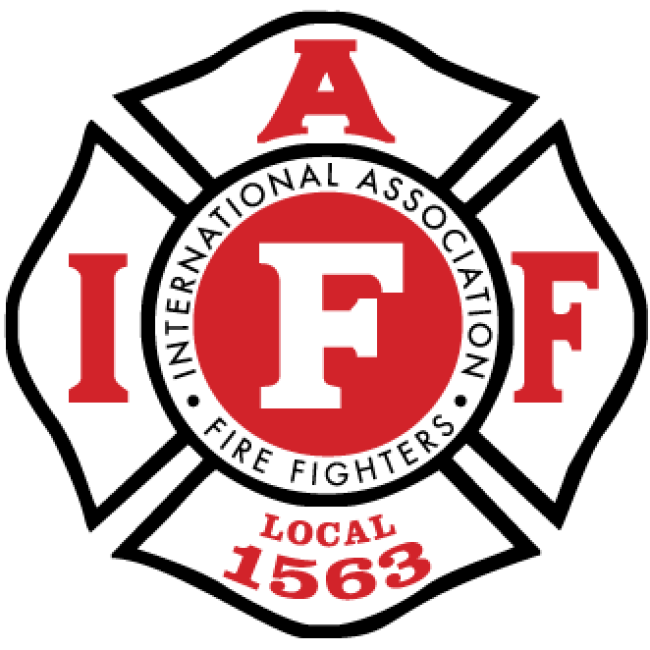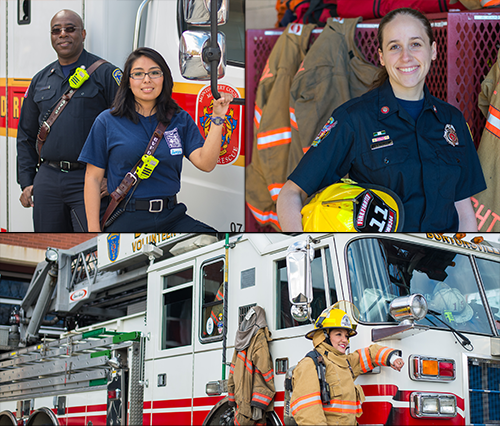Fire and rescue services play a pivotal role in ensuring community safety daily. These dedicated professionals are always on the front lines, ready to respond to emergencies immediately. Fire and rescue services are responsible for more than just extinguishing fires; they also provide crucial medical assistance, conduct search and rescue operations, and offer fire prevention and safety education.
Fire and rescue services’ commitment to safeguarding lives and property is unwavering. They often put themselves in harm’s way to protect others. Fire and rescue services maintain public safety and preparedness through rigorous training, advanced equipment, and a strong sense of duty. Their presence offers a sense of security and assurance, knowing that skilled and courageous individuals are always ready to act in the face of danger.
The Role of Fire and Rescue Services in Community Safety
Fire and rescue services are crucial in ensuring community safety and responding to emergencies swiftly and efficiently.
- Emergency Response: Firefighters are first responders to fires, accidents, and medical emergencies, providing immediate assistance and life-saving measures.
- Fire Prevention: They work proactively to prevent fires and reduce the risk of incidents through inspections, education programs, and enforcement of fire codes.
- Rescue Operations: Fire and rescue teams conduct search and rescue missions during natural disasters, building collapses, and other emergencies, ensuring the safety of those trapped or in danger.
- Medical Assistance: Many firefighters are trained as EMTs or paramedics, offering essential medical care at the scene of emergencies, stabilizing patients, and providing critical support until further help arrives.
- Community Education: Fire and rescue services engage with the community through public education programs, teaching fire safety, emergency preparedness, and the proper use of fire safety equipment.
The dedicated efforts of fire and rescue services are fundamental to maintaining the safety and well-being of our communities.
Training and Preparedness: The Backbone of Fire and Rescue Teams
Training and preparedness are fundamental to the effectiveness of fire and rescue services, forming the backbone of their operational success. Firefighters and rescue personnel undergo rigorous and continuous training to hone their skills in firefighting, emergency medical response, hazardous material handling, and technical rescues. This extensive training ensures they are well-prepared to tackle various emergencies under pressure.
Preparedness also involves regular drills and simulations replicating real-life scenarios, allowing teams to practice coordination, communication, and rapid decision-making. These exercises are crucial for building teamwork and ensuring each member knows their role in an emergency.
Additionally, staying updated with the latest techniques and technologies in fire and rescue operations is vital for maintaining high service standards. The commitment to ongoing education and preparedness enables fire and rescue teams to respond swiftly and effectively, ultimately safeguarding lives and property.
Advanced Equipment and Technology in Modern Firefighting
Advanced equipment and technology have revolutionized modern firefighting, enhancing the efficiency and safety of fire and rescue operations.
- Thermal Imaging Cameras: These devices allow firefighters to see through smoke and darkness, quickly locating victims and identifying hotspots that need immediate attention.
- Advanced Breathing Apparatus: Modern breathing gear provides firefighters with clean air in toxic environments, extending operational time and improving safety.
- High-Tech Fire Engines and Trucks: Equipped with high-powered hoses, ladders, and advanced communication systems, these vehicles enhance coordination and resource deployment during emergencies.
- Drones: Used for aerial surveillance, drones offer valuable insights into fire scenes, helping in strategic planning and resource allocation.
- Computer-Aided Dispatch Systems: These systems ensure rapid and accurate dispatching of fire and rescue teams, minimizing response times and enhancing overall efficiency.
Adopting these advanced tools and technologies has significantly improved firefighting capabilities, making fire and rescue operations more effective and safer for responders and the public.
Fire Prevention Education: A Proactive Approach to Safety
Fire prevention education is essential for fostering a safe and resilient community. By teaching individuals about fire hazards and safety practices, fire and rescue services can significantly reduce the occurrence and impact of fires.
- School Programs: Engaging students with interactive lessons on fire safety, evacuation plans, and the proper use of fire extinguishers.
- Community Workshops: Hosting workshops that provide practical fire safety tips and demonstrate the importance of smoke alarms and fire drills.
- Home Safety Inspections: Offering free home inspections to identify potential fire hazards and recommend corrective actions.
- Public Awareness Campaigns: Utilizing media and social platforms to disseminate fire safety information and raise awareness about fire prevention.
- Emergency Preparedness Drills: Conduct regular drills to ensure that individuals and families know how to respond effectively in case of a fire.
By investing in fire prevention education, communities can proactively ensure their safety and preparedness.
Emergency Medical Response: Beyond Firefighting
Fire and rescue services extend their expertise beyond firefighting to provide critical emergency medical response, ensuring comprehensive community safety. Many firefighters are also trained as emergency medical technicians (EMTs) or paramedics, enabling them to deliver life-saving medical care at the scene of accidents, cardiac events, and other medical emergencies.
This dual role allows fire and rescue personnel to stabilize patients, administer first aid, and provide advanced medical interventions before ambulances arrive. Integrating medical response into fire services is particularly vital in rural or densely populated urban areas where emergency medical services may face delays.
Firefighters with medical training can begin essential treatment, such as CPR or automated external defibrillators (AEDs), significantly improving patient outcomes. Offering emergency medical response, fire, and rescue services enhance their capability to protect and save lives, further reinforcing their essential role in community safety.
The Importance of Community Engagement in Fire and Rescue Services
Community engagement is essential for the effectiveness of fire and rescue services, fostering trust, cooperation, and safety awareness among residents.
- Building Trust and Transparency: Engaging with the community through open houses, station tours, and public events helps build trust and transparency, allowing residents to see firsthand the dedication and professionalism of fire and rescue personnel.
- Education and Awareness: Fire safety education programs in schools and community centers raise awareness about fire hazards and teach essential safety practices, such as fire extinguishers and the importance of smoke alarms.
- Emergency Preparedness: Community engagement initiatives often include training on emergency response, evacuation plans, and first aid, ensuring that residents are better prepared to handle emergencies before professional help arrives.
- Feedback and Improvement: By soliciting feedback from the community, fire and rescue services can identify areas for improvement and tailor their strategies to address specific local concerns and challenges.
- Fostering Community Resilience: Collaborative efforts between fire services and community members create a more resilient community, capable of supporting each other and responding effectively during crises.
Strengthening community engagement is crucial for the success of fire and rescue services. By working together, firefighters and residents can build a safer, more informed, and better-prepared community.
Collaboration with Other Emergency Services for Comprehensive Safety
Collaboration with other emergency services is essential for fire and rescue services to provide comprehensive safety and effective emergency response. Fire departments often work closely with police, emergency medical services (EMS), and disaster response teams to coordinate efforts and resources during emergencies.
This multidisciplinary approach ensures that all aspects of a crisis are managed efficiently, from fire suppression and rescue operations to medical care and law enforcement. Joint training exercises and interagency communication protocols are crucial for building seamless cooperation among these services. During large-scale incidents, such as natural disasters or terrorist attacks, unified command structures enable different agencies to operate under a single framework, optimizing resource allocation and decision-making.
By collaborating with other emergency services, fire and rescue teams can enhance their response capabilities, reduce response times, and improve public safety. This integrated approach ensures that communities receive the highest protection and support during emergencies.
The Impact of Fire and Rescue Services on Public Health and Safety
Fire and rescue services are crucial in enhancing public health and safety, ensuring communities are well-prepared to handle emergencies.
- Rapid Emergency Response: Fire and rescue teams provide immediate assistance during fires, accidents, and medical emergencies, minimizing injuries and fatalities.
- Fire Prevention Education: Through educational programs, they teach communities about fire hazards and safety practices, reducing the likelihood of fire incidents.
- Disaster Management: They are vital in responding to natural and artificial disasters and coordinating rescue and recovery efforts to protect public health.
- Hazardous Material Handling: Firefighters are trained to manage and contain hazardous materials, preventing environmental and health risks.
- Community Resilience: Fire and rescue services strengthen communities’ overall resilience by fostering a culture of preparedness and safety.
The dedication and expertise of fire and rescue services are invaluable in safeguarding public health and safety.
Fire and rescue services are the backbone of community safety, providing essential protection and peace of mind. Their roles encompass firefighting, emergency medical response, rescue operations, and public safety education. The Anne Arundel County Professional Fire Fighters Local 1563 are exemplary in their dedication to safeguarding lives and property.
They exemplify the highest standards of training, preparedness, and community engagement. To support their vital work and ensure they have the resources to continue protecting our community, consider contacting the Anne Arundel County Professional Fire Fighters Local 1563 at 410-987-1180. Your involvement and support can make a significant difference in enhancing the safety and well-being of our community.

